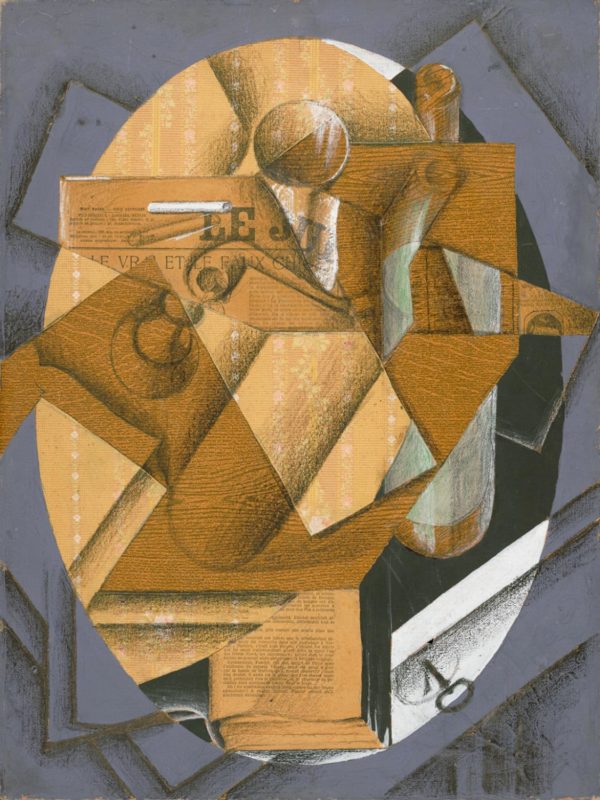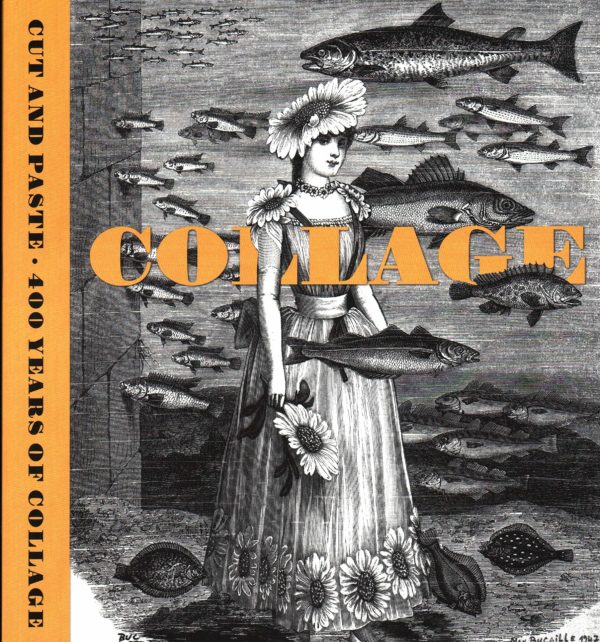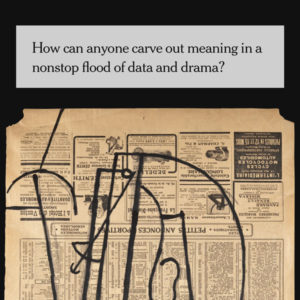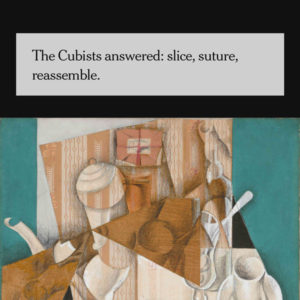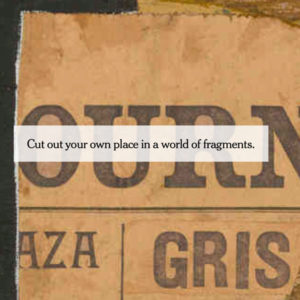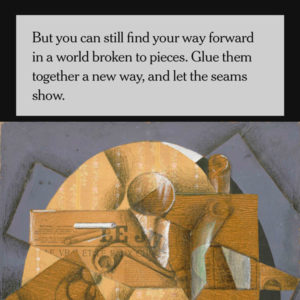“An Art Revolution, Made With Scissors and Glue” is a wonderfully-produced NYTimes “Close Read” column by Jason Farago, looking at Juan Gris’s 1914 “Still Life: The Table,” and talking about the Cubists’ use of collage and its impact on art.
My only quibble is with this sentence:
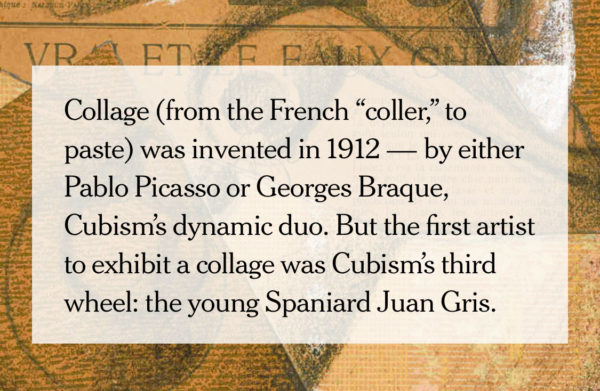
Okay, maybe it’s a little more than a quibble. I’ll let curator Patrick Elliott explain with this excerpt from his essay in the catalog for a thoughtful show I saw at the Scottish National Gallery of Modern Art, “Cut And Paste: 400 Years of Collage”:
The idea of collage is so brilliant, so simple, so rich and imaginative in every way, that you might wonder why nobody had thought of it before. Well in fact they had, but historians of modern art have tended to ignore anything before 1912. Books on collage scarcely mention the fact that collage has a history stretching back hundreds of years. Almost all of the exhibitions of collage held around the world have started with Cubist collage. If pre-modern collage is discussed, it is treated dismissively as a hobby, as the world of amateurs, folk artists, women and children, or something the well-off did in private, at the dining-room table and showed only to family and friends.
This is a point I made in Newspaper Blackout: We think of collage and cut-up writing as a 20th-century invention, but there’s actually a 250-year-old history of cutting up texts, going at least as far back as Caleb Whitefoord skipping newspaper columns in the 1760s and Thomas Jefferson cutting up the gospels 50 years later. This work was done either in a pub to amuse friends (Whitefoord) or in private study (Jefferson), but it still happened.
I think the message of Farago’s piece — that we can all use the revolutionary tool of collage to process our overwhelming world — is strengthened by acknowledging this preceding work that is usually ignored, like Victorian scrapbooks, mosaic work, découpage, paper collé, etc. The innovation of Picasso, Braque, and Gris, was to do this thing that people were already doing, but do it as Art with a capital A. Now, we can take collage back from Art, and back into our spaces, where it first begin.
* * *
Read more posts about collage
